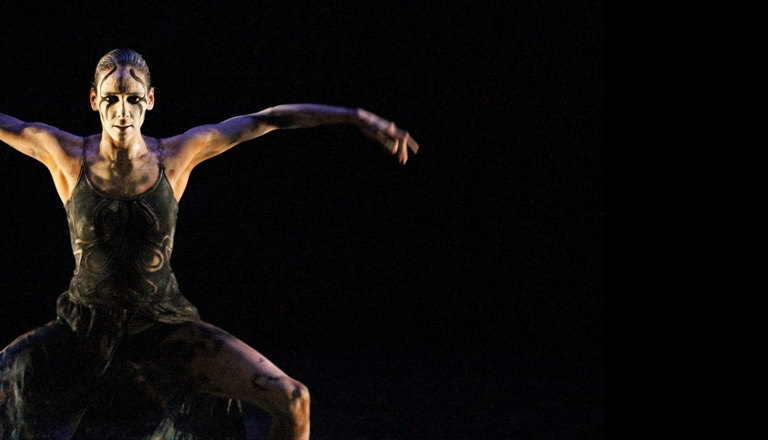Moth (2003)
Moth (an excerpt from Bush)
WHAT IS THE DANCE MOTH ABOUT?
Moth (Dhumar) is the third dance in a section of Bush that is titled Life Cycle. The first two dances in the Life Cycle section are Leaf and Caterpillar.
The dance Moth represents a story of spiritual inheritance and spiritual existence. It also reflects the last stage of a lifecycle and the birth of a new creature. The dance illustrates the final process of metamorphosis, which begins with the ova, through the larvae and pupa stages till finally the moth emerges from its cocoon to discover its environment.
In this dance the moth emerges and transforms, reflecting the human lifecycle and the passing on of knowledge. Mothrepresents the resilience of the spirit of Indigenous Australians.
HOW DOES THE DANCE TELL THE STORY?
The two dancers seen in the clip represent the concept of spiritual guidance, where the old spirit is guiding the new, and where what is sacred and delicate is transferred with the right energy. The young spirit must listen well and see clearly to enable it to learn about life.
One dancer shadows the movements of the other. Observing the qualities of the dancers’ movements shows how the dance can tell a story by creating interesting dynamics through movement. The dancers are light on their feet; their knees are bent to absorb the quick transference of weight. Their arm movements change from being outstretched to fold into the body. They execute these movements by controlling the centre of their body so they can stay balanced as they move their arms in very quick, but controlled wing-like actions.
SOME SPECIFIC FEATURES OF MOTH
In the dance Moth, the dancers illustrate the way the moth feels the air for the first time beyond the protection of the cocoon. The two dancers interact and support each other using partnering techniques (pas de deux). Some of the choreography has the dancers moving in unison; at other times we see them mirror each other. The excerpt Moth also demonstrates the choreographic possibilities of movements (developing a movement vocabulary) inspired by biological attributes of animals as they relate to their own unique physical features. Examples of this are quick expansions and contractions of movements, small shifts to inhabit another space, and soft movements that have faded endings. This demonstrates the use of space and dynamics.


 Deborah Brown, Sani Townson. Photo: Greg Barrett (2003)
Deborah Brown, Sani Townson. Photo: Greg Barrett (2003)